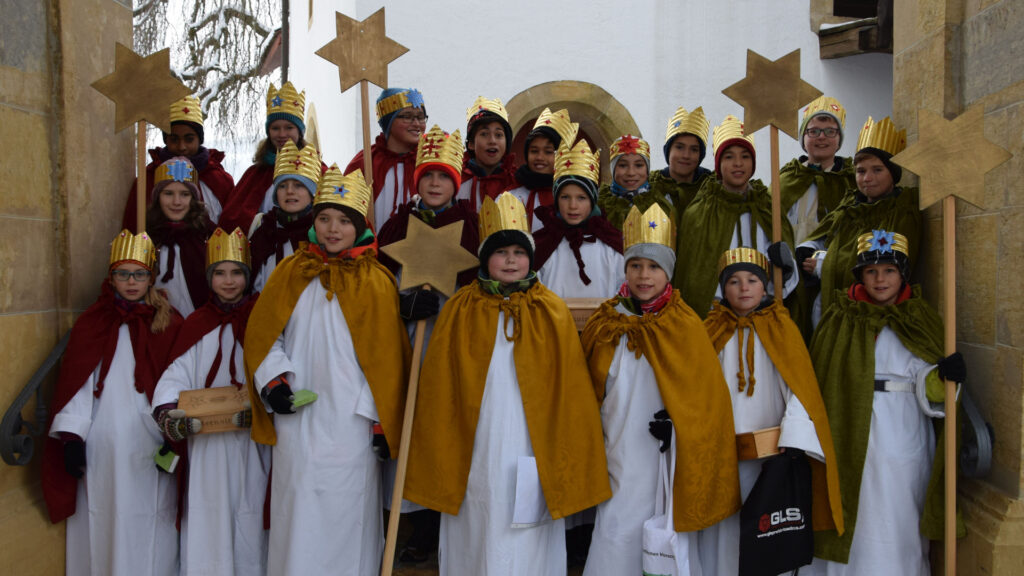Dreikönigstag (Three-Kings Day)
The end of the Christmas season is marked by Three-Kings Day, also called Epiphany, on January 6. In some countries, including some of the Swiss cantons (Schwyz, Uri, Ticino), and in the neighboring region of southern Germany, Three-Kings Day is a public holiday. In Basel, however, it is a regular work day, although it is associated with some traditions you may come to appreciate.
The Religious Background
Three-Kings Day represents the day when, according to the gospel of Matthew, wise men, or kings, were guided by the light of a particularly bright star to visit the Baby Jesus at his birthplace in Bethlehem and worship him, bearing gifts of gold, myrrh, and frankincense and. The exact number and heritage of these wise men, or Magi, has never been specified, but because three gifts were mentioned, it was assumed there were three wise men as well. Subsequently they were given the names Caspar, Melchior, and Balthasar, although in other countries they may be known by different names. One of them is traditionally depicted as dark skinned, although their countries of origin also have not been specified.
Current Traditions
The most commonly found tradition associated with Three Kings Day in this area is the baking and eating of a “Dreikönigskuchen” (Three Kings Cake), which is especially popular with the kids. Its origins date back to the 16th century. The cake is made from sweetened yeast dough that is formed into several balls which are arranged in a flower shape before baking. One of these balls contains a small plastic figure representing a king. To eat the cake, each family member breaks off one of the balls, and whoever gets the one with the little figure is now the “king (or queen) for the day.” You can buy these cakes at all supermarkets, where they are sold with a gold paper crown that the “king/queen” gets to wear to signify his (or her) position. These cakes are so popular, that according to Wikipedia around 1.5 million of them are produced each year in Switzerland, and only around January 6. This means that almost every household in the country buys at least one of these cakes!
Of course you can also make your own cake, and if you don’t have a little plastic king left over from last year, you can also use any other small plastic figure or even a coin instead. If you would like to be as authentic as possible, check with your local bakery—they may have these figures in stock and be able to sell you one.

Another tradition that you may come across here is the “Sternensingen” (star singing). You will find it primarily in predominantly Catholic areas where it is organized by the church parishes. For this, groups of three children, dressed up as the three kings, go to people’s homes between December 27 and January 6 to sing special songs in return for charitable donations. They also say a prayer to bless the home, which is also indicated by the letters 20*C+M+B*23, written in chalk above the house’s front door. The letters represent not only the names of the three kings, but also the saying “Christus mansionem benedicat” (Christ bless this house).
Basel’s Three Kings
Of course, you can see the Three Kings in Basel not only on January 6 but year round—on the façade of the Grand Hotel Les Trois Rois at the Schifflände. This hotel has a long history beginning in 1681, when it was first mentioned under this name. Since then, the property has undergone numerous changes, expansions, and renovations until it was restored to its current form in 2004-2006. It is widely considered the best hotel in Basel and has hosted such luminaries as Napoleon, Queen Elizabeth II, and Pablo Picasso.
Share





